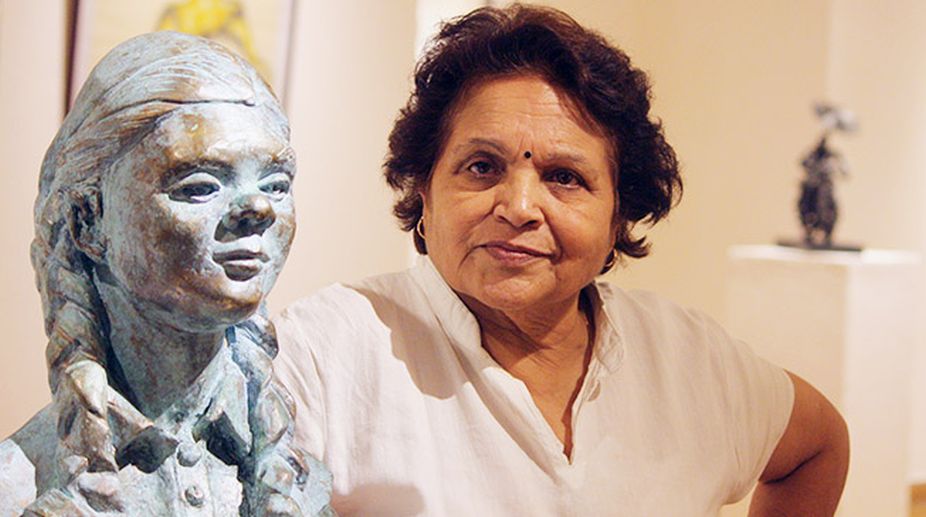Kiran Dixit Thacker, who is known for her sculptures and paintings where she captures the various mood and essence of people, animals and nature, exhibited her collection of bronze and terracotta sculptures at Birla Academy of Fine Arts in Kolkata, recently. She was trained under the renowned Ramkinkar Baij and started working on her craft in the year 2000.
In the turn of the millennium the female is no more to be defined by the conventional ways of the orthodox society. She is now a free spirit who is embracing her virtues, her ideas, and her body with as much good faith as she has always held on to her integrity. Thacker’s exhibition Les Femmes Fatales is a celebration of the women who have broken down the shackles of the patriarchal society to pave their own way into life.
Thacker is at an age where most artists would not take up the risk to create something new for the audience. Yet, almost like the female in her sculpture, she still stands her ground to give shape to the various ethos and intrinsic nature of her subjects. In her exhibition, she has portrayed the modern woman as, she would say, “someone bold, someone with a vision, someone with gumption.”
Advertisement
She explained the fact that the real change in a woman’s life would arrive if only they are willing to let that change happen, if they can accept as an individual who is equal to all other individuals.
“The thought needs to change and change is the biggest challenge”, the sculptor expla-ined while looking at a portrait of a Brazilian woman. Art has always been, probably, the only platform where the individual mind is not answerable for anything that it thinks. It is the only place where craft merges with perception.
Her depiction of the bold woman as the seductress who is all prepared to take the charge of her own desire and move ahead with utmost strength, is reflected in her shaping of the female figure and form through sketches, drawings, paintings and sculptures on wax plate and bronze.
Thacker is known for her utmost precision in designing the life-size bronze figures. She stresses upon the fact that anything raw needs to be arranged in a design in order to give it genuine resemblance. “I believe you should know how to design, there has to be an understanding of designing” she pointed out at those various women who were captured in their most primitive states of being; some reclining with utmost grace, some all held up for the day’s chores in the crop fields.
Her sketches and paintings bring together the relentless freedom of the West and the subtle fine-grained agility of the East. “I always believe that you should be like a blotting paper. Take the best from the West and the best from the East.” In her exhibition, she came up with the sculptures of women from various races of life. While there were a few whom she addressed to be her neighbour, some were the tribal women who were depicted as workers on corn fields or dancing to the evening birdsong.
There were also women whom she had depicted in all their forms and sizes, while they either seemed to reluctantly recline on to something or stood with grace with her other companions.
Being one of the earliest feminists who had parted ways with the white-feminists, along with the brown and the black feminists, Thacker is bothered by the fact that even today most women in the East are unable to think independently about equality.
A woman’s femininity is a socially constructed law for women to behave in a certain way, think in a certain way, and remain in a certain way. Femininity is all about how a woman should be.
Taking inspiration from women like Amrita Pritam, Amrita Shergill, Simone de Beauvoir, Frida Kahlo and Taslima Nasrin, Dixit just like her craft is strictly against a woman’s submission to social norms.
Advertisement











